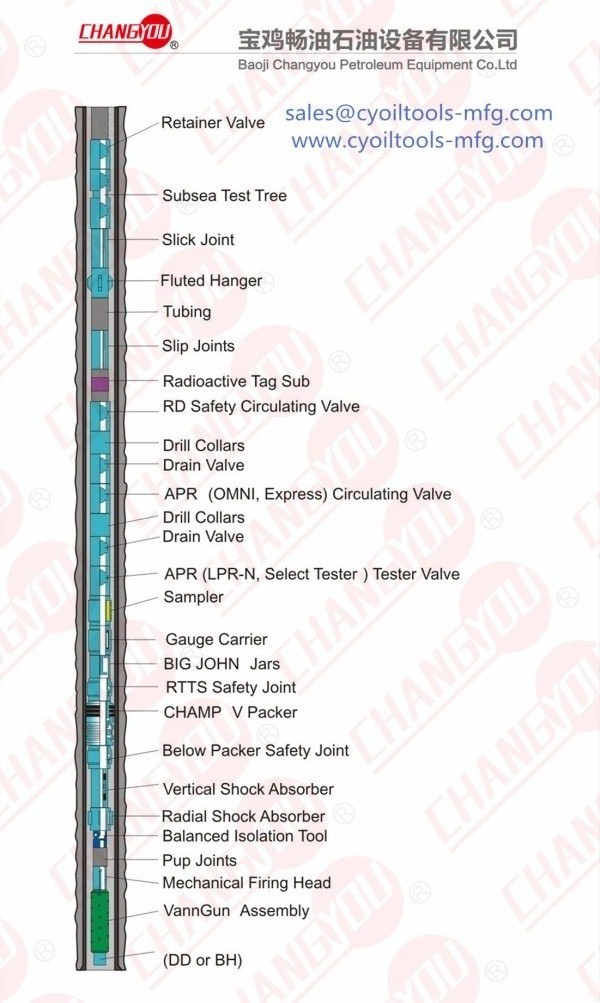HOME >> News >> Industry Information
DRILL STEM TESTING |
[ Time:2018-08-06 | Hits:817 ] |
| Drill Stem Testing is a basic oilfield evaluation tool. DST’s are essential in determining the disposition of current wells and providing reservoir data which can aid in predicting productivity and appropriate well completion techniques.
The primary objective of Drill Stem Testing is to determine the type and rate of production, formation characteristics and conditions. Detailed interpretative analyses of drill stem tests provides vital information such as reservoir characteristics, permeability, virgin reservoir pressures and temperatures, reservoir drawdown and hydrocarbon recoveries. The incorporation of such data into an exploration program proves to be invaluable and essential for an overall perception of fluid migration. To the explorationist, evaluation of individual DST’s is important to determine if potential zones were fully evaluated or if by-passed hydrocarbons are present. Virgin reservoir pressures as determined by DST’s can be compared to post- simulation results to determine stimulation effectiveness. The application of DST’s in petroleum hydrodynamics is invaluable in delineating reservoir continuity, fluid gradient analysis, fluid migration pathways and pressure regime interpretation. Applications of DST’s encompasses direct involvement in exploration, exploitation, reservoir engineering, hydrodynamics and drilling analysis. DST tools include mechanical operation and pressure control operation(MFE&APR/PCT tools) and pressure control operation DST tools usually consists of slip joint, RD(S) circulating valve, drain valve, circulating valve, tester valve(normal&lock/hold open), gauge carrier, jar, sampler, safety joint, packers, absorber(horizontal&vertical) and so on.
(From AIFE) |
